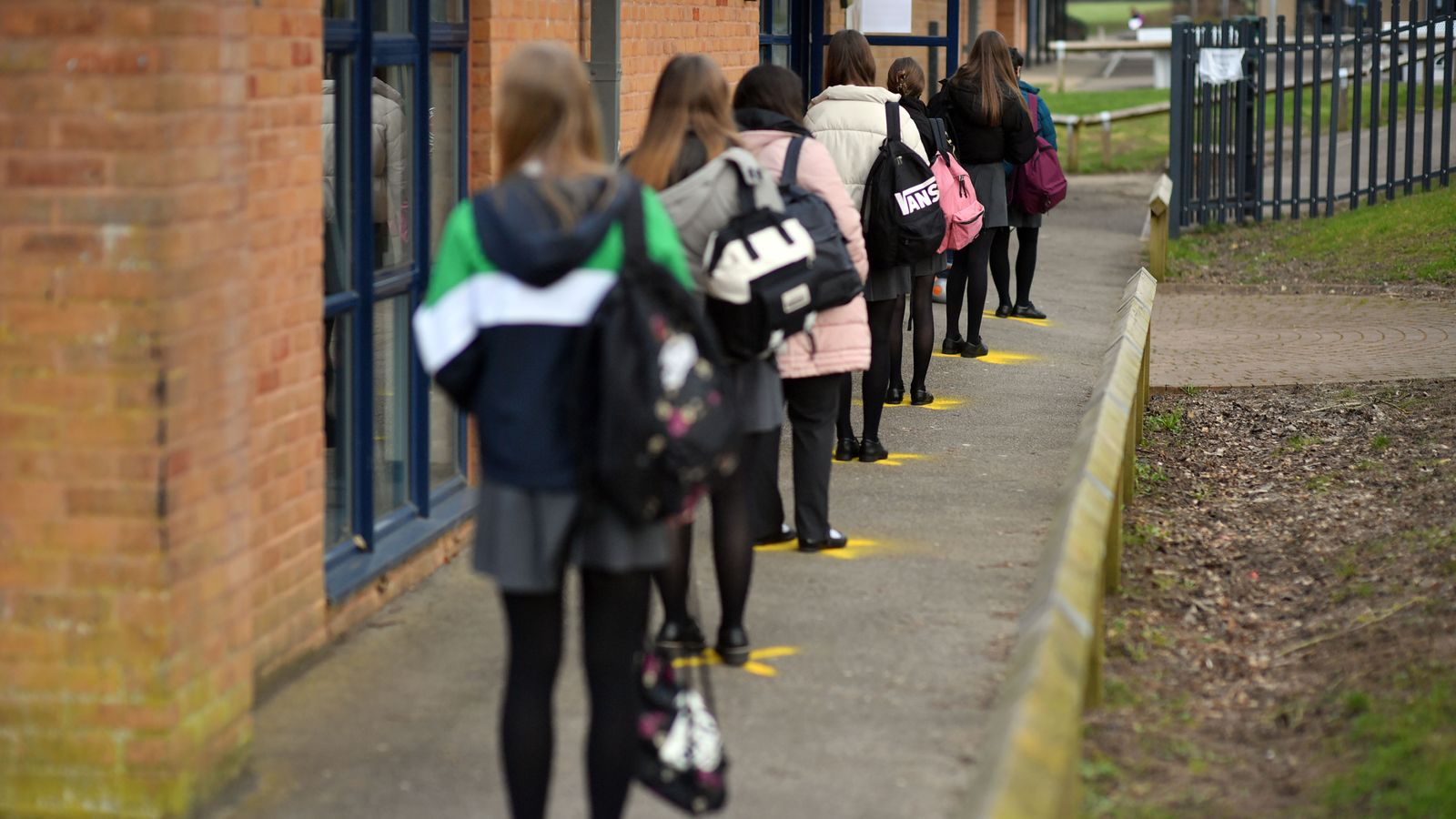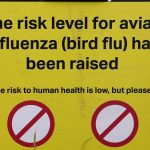COVID-19 infection levels have risen slightly among secondary school-age children in England, new figures show.
In the second week that pupils were back in class after two months of home schooling in the third lockdown, tests showed an increase in positive cases among pupils aged 11-16.
For school years 7 to 11, in the week up to 20 March, 0.43% of children on average tested positive for coronavirus.
This was up from 0.32% the week before, the figures from the Office for National Statistics showed.
Secondary school pupils across England returned to their classes on 8 March – a move that is likely to have affected the spread of coronavirus, due to the mixing of staff, parents and students.
Sarah Crofts, senior statistician for the COVID-19 Infection Survey, said: “We have seen an increase in infections among secondary school-aged children, perhaps reflecting the reopening of schools, however it is too early to say if this is a larger trend.
“We will continue to closely monitor infections by age.”
But infections fell in older teenagers and young people, the ONS estimates.
In the week up to 20 March, on average 0.23% of 17 to 24-year-olds tested positive for COVID-19, compared with 0.40% the previous week.
About one in 340 people in private households in England had COVID-19 in the week to 20 March – unchanged on the previous week, and the lowest figure since the week to 24 September 2020.
The ONS said the overall percentage of people in England testing positive “is likely to have levelled off”.
Professor James Naismith, from the University of Oxford, said: “Today’s ONS data are less reassuring than last week; they serve as a caution but not yet evidence we need to change course.”
He added: “What has to be understood is that the new variants are harder to control and it seems likely that the limited reopening of schools has started to show up in data.”






















